Do you have a question about the Carrier Performance 25TPB7 and is the answer not in the manual?
Warning about electrical shock hazard during installation and servicing, requiring disconnect.
Warning concerning explosion hazard from improper refrigerant handling or testing with oxygen.
Guidance on mounting the unit securely on a level pad to prevent movement and ensure stability.
Specifies required clearances around the unit for airflow, service, and protection from elements.
Instructions to verify unit specifications and ensure job site readiness before installation.
Procedures for safely removing the unit from packaging and checking for shipping damage.
Verifying the correct location and secure attachment of the defrost thermostat on the stub tube.
Instructions to raise the unit to ensure clearance above snowfall and provide adequate drainage.
Guidelines for installing an LSV kit in long-line applications for proper operation.
Instructions for connecting refrigerant tubing, including safety precautions and proper procedures.
Detailed instructions and safety warnings for brazing refrigerant lines and components.
Procedure for installing the required filter drier in the liquid line, including brazing.
Methods and importance of deep vacuum evacuation to remove air and moisture from the system.
Instructions for safely connecting power and ground wires to the unit's control box.
Explanation of InteliSense™ technology, its sensors, and connectivity with smart thermostats.
Guidance on selecting proper airflows for ECM and variable speed furnaces during cooling.
Instructions for selecting airflows for FT4B fan coils using the Easy Select control board.
Step-by-step guide for safely starting up the system after installation and evacuation.
Details on how the unit operates in cooling and heating modes based on thermostat signals.
Explanation of the defrost control, settings, and initiation/termination sequences.
Procedure for forcing a defrost cycle and understanding its effects with Quiet Shift-2.
Procedure for checking and adjusting refrigerant charge using subcooling under favorable conditions.
Guidance on using the heating check chart to verify correct system operation and pressure.
Checking suction pressures and compressor current for proper switching between low and high stages.
Methods to verify the compressor unloader mechanism is functioning correctly.
Essential final checks before leaving the job site, including wiring, covers, and documentation.
Using winding resistance table to diagnose potential compressor winding damage.
Overview of key components like the 2-stage compressor and its protection mechanisms.
Importance of periodic maintenance for continuing high performance and minimizing equipment failure.
Information on accessing professional HVAC training resources via My Learning Center.
Warning about electrical shock hazard during installation and servicing, requiring disconnect.
Warning concerning explosion hazard from improper refrigerant handling or testing with oxygen.
Guidance on mounting the unit securely on a level pad to prevent movement and ensure stability.
Specifies required clearances around the unit for airflow, service, and protection from elements.
Instructions to verify unit specifications and ensure job site readiness before installation.
Procedures for safely removing the unit from packaging and checking for shipping damage.
Verifying the correct location and secure attachment of the defrost thermostat on the stub tube.
Instructions to raise the unit to ensure clearance above snowfall and provide adequate drainage.
Guidelines for installing an LSV kit in long-line applications for proper operation.
Instructions for connecting refrigerant tubing, including safety precautions and proper procedures.
Detailed instructions and safety warnings for brazing refrigerant lines and components.
Procedure for installing the required filter drier in the liquid line, including brazing.
Methods and importance of deep vacuum evacuation to remove air and moisture from the system.
Instructions for safely connecting power and ground wires to the unit's control box.
Explanation of InteliSense™ technology, its sensors, and connectivity with smart thermostats.
Guidance on selecting proper airflows for ECM and variable speed furnaces during cooling.
Instructions for selecting airflows for FT4B fan coils using the Easy Select control board.
Step-by-step guide for safely starting up the system after installation and evacuation.
Details on how the unit operates in cooling and heating modes based on thermostat signals.
Explanation of the defrost control, settings, and initiation/termination sequences.
Procedure for forcing a defrost cycle and understanding its effects with Quiet Shift-2.
Procedure for checking and adjusting refrigerant charge using subcooling under favorable conditions.
Guidance on using the heating check chart to verify correct system operation and pressure.
Checking suction pressures and compressor current for proper switching between low and high stages.
Methods to verify the compressor unloader mechanism is functioning correctly.
Essential final checks before leaving the job site, including wiring, covers, and documentation.
Using winding resistance table to diagnose potential compressor winding damage.
Overview of key components like the 2-stage compressor and its protection mechanisms.
Importance of periodic maintenance for continuing high performance and minimizing equipment failure.
Information on accessing professional HVAC training resources via My Learning Center.
This document provides installation instructions for the 25TPB7 Performance Series 2-Stage Heat Pump with Puron Refrigerant and InteliSense Technology, designed for 2 to 5 tons. It emphasizes safety considerations, proper installation techniques, electrical connections, and operational checks to ensure efficient and reliable performance.
The manual begins with critical safety information, stressing that the appliance should only be installed by EPA-qualified personnel. It warns against improper installation, adjustment, alteration, service, maintenance, or use, which could lead to explosion, fire, electrical shock, or property damage. Users are advised to consult a qualified installer or service agency and use factory-authorized kits or accessories for modifications. Adherence to all safety codes, including wearing safety glasses, protective clothing, and work gloves, is mandatory. For brazing operations, a quenching cloth and a dry powder or CO2 fire extinguisher should be available. The document highlights the importance of using tools designed for the specific refrigerant, noting that non-sparking tools are required for A2L refrigerants. A refrigerant detector should be used before and during installation to check for leaks, and open flames or ignition sources are prohibited during brazing, except when refrigerant tubes are open to the atmosphere or properly evacuated. The safety-alert symbol is used to indicate potential personal injury, with signal words like DANGER, WARNING, and CAUTION to denote varying levels of hazard. A WARNING regarding electrical shock hazard emphasizes that the main electrical disconnect switch must be in the OFF position and locked out/tagged before any installation, modification, or servicing. Another WARNING addresses explosion hazards, prohibiting the use of air or oxygen-containing gases for leak testing or operating refrigerant compressors, and warning against operating compressor suction pressure in a vacuum with service valves closed.
The manual provides several recommendations for optimal installation. The maximum allowed elevation for the unit is 10,000 feet (3000 meters) above sea level. It advises locating the unit away from windows, patios, and decks to minimize noise disturbance. Ensuring appropriate vapor and liquid tube diameters for the unit's capacity is crucial. Refrigerant tubes should be run with no bends having a centerline bend radius less than 2.5 times the external pipe diameter. Leaving some slack between the structure and the unit helps absorb vibration. When passing refrigerant tubes through a wall, the opening should be sealed with RTV or other pliable silicon-based caulk. Direct tubing contact with water pipes, duct work, floor joists, wall studs, floors, and walls should be avoided. Refrigerant tubing should not be suspended from joists and studs with rigid wire or straps that directly contact the tubing. Tubing insulation must be pliable and completely surround the vapor tube. When necessary, hanger straps, 1 inch (25 mm) wide and conforming to the insulation's shape, should be used, with metal sleeves isolating them from the insulation. Provisions for expansion and contraction of long piping runs are necessary. Piping and fittings should be protected from adverse environmental effects like dirt and debris. The installation should reduce the likelihood of hydraulic shock, and certified piping and components must be used to prevent corrosion. Flexible pipe elements need protection against mechanical damage, excessive stress by torsion, or other forces, and should be checked annually. Piping material, routing, and installation must comply with national and local codes and standards, and precautions should be taken to avoid excessive vibration or pulsation when setting up refrigerant piping.
For installations requiring the unit to be attached to a pad, tie-down bolts should be used through knockouts in the unit base pan. The manual refers to a diagram for base pan size and knockout hole location. For hurricane tie-downs, distributors should be contacted for details and PE Certification. On rooftop applications, the unit should be mounted on a level platform or frame, above a load-bearing wall, and isolated from the structure to minimize vibration transmission. Supporting members should adequately support the unit. For roof-mounted units exposed to winds above 5 mph (8.05 km/h), wind baffles may be required, with details found in the Service Manual. The unit must be level within ±2° (±3/8 in./ft, ±9.5 mm/m) as per compressor manufacturer specifications. A CAUTION regarding unit operation hazard warns against equipment damage or improper operation if the unit is not stable in all circumstances, including adverse weather conditions.
Proper clearance for airflow, wiring, refrigerant piping, and service is essential. A 24-inch (610 mm) clearance is required for the service end of the unit, and 48 inches (1219 mm) above it. For proper airflow, a 6-inch (152 mm) clearance on one side and 12 inches (305 mm) on all remaining sides must be maintained. A distance of 24 inches (610 mm) between units is also specified. The unit should be positioned so that water, snow, or ice from the roof or eaves does not fall directly on it. On rooftops, the unit must be at least 6 inches (152 mm) above the roof surface.
The manual emphasizes that all split system and packaged heat pumps must be installed according to applicable regional efficiency standards. Upon unpacking, care must be taken not to damage the unit. Any shipping damage or incompleteness should be filed with the shipping company before installation. The unit rating plate, located on the corner panel, contains crucial installation information and should be checked to ensure it matches job specifications. A CAUTION regarding cut hazard advises using care and wearing appropriate protective clothing and gloves when handling sheet metal parts due to sharp edges or burrs.
The defrost thermostat's proper location and secure attachment are important. It should be located on the 3/8-inch O.D. stub tube, approximately 2 inches long, at the end of one of the feeder tubes from the liquid header into the outdoor coil. This stub tube is typically the bottom circuit.
A CAUTION regarding unit operation hazard warns against water and/or ice buildup in the base pan. The unit should be elevated according to local climate and code requirements to provide clearance above estimated snowfall and ensure adequate drainage.
For refrigerant piping arrangements with equivalent lengths greater than 80 ft (24 m) and/or elevation differences greater than ±20 ft (±6.1 m), all requirements of the Residential Piping and Long-Line Guideline must be followed. If required, an LSV kit (part no. KHALS0401LLS) specifically designed for R-410A refrigerant heat pumps should be installed within 2 ft (0.6 m) of the outdoor unit, with the flow arrow pointing toward the outdoor unit. The installation instructions included with the accessory kit should be followed.
A WARNING regarding personal injury and environmental hazard states that pressure must be relieved and all refrigerant recovered before system repair or final unit disposal, using all service ports and opening all flow-control devices, including solenoid valves. Federal regulations prohibit venting refrigerant into the atmosphere. A CAUTION regarding unit damage hazard warns against burying any refrigerant tubing without a 6-inch (152 mm) vertical rise at the service valve, and not burying lines longer than 36 inches (914 mm). Outdoor units can be connected to indoor sections using accessory tubing packages or field-supplied refrigerant-grade tubing. For tubing requirements beyond 80 ft (24 m), substantial capacity and performance losses can occur, which can be mitigated by following the Residential Piping and Long Line Guideline. If refrigerant tubes or the indoor coil are exposed to the atmosphere, they must be evacuated to 500 microns to eliminate contamination and moisture.
The outdoor unit comes with an approximate system refrigerant charge for operation with an approved AHRI-rated indoor unit when connected by 15 ft (4.6 m) of field-supplied or factory-accessory tubing, and a factory-supplied filter drier. The refrigerant charge should be checked for maximum efficiency.
Service valves are shipped closed and plugged from the factory, with the refrigerant charge sealed in the unit. They should remain closed until all other refrigerant system work is complete to prevent charge loss. Plugs should stay in place until the line set tubing is ready for insertion. Heat pumps require a piston metering device in the liquid service valve for proper heating operation. The piston is shipped in the piston body, temporarily held by a plastic cap, which should not be removed until the line set tubing is ready. The installation steps for the piston include removing the plastic cap, checking the piston size against the unit rating plate, returning the piston to the piston body, installing a plastic washer in the seat, fitting a brass nut onto the adapter tube, and installing the tube onto the liquid service valve. Over-tightening the nut can damage the plastic washer and service valve's piston body.
A WARNING regarding fire hazard states that refrigerant and oil mixture can ignite and burn if it escapes and contacts a brazing torch. The refrigerant charge must be properly removed from both high and low sides of the system before brazing. A CAUTION regarding burn hazard warns that components will be HOT after brazing, requiring appropriate personal protective equipment and allowing parts to cool before handling. Heat absorbing paste or heat sink product (like a wet cloth) should be applied between the service valve and joint. After wrapping the service valve with a wet cloth, the tubing set can be brazed using silver-bearing or non-silver-bearing brazing material. Soft solder (materials melting below 800°F/427°C) should not be used. Some outdoor units have a mechanical fitting at the liquid distributor that is not field serviceable and should not be disturbed. For the liquid service valve, the lineset should be brazed to the adapter tube BEFORE bolting the adapter to the valve to prevent overheating and damage to the plastic washer or o-ring. For the vapor service valve, the valve core should be removed from the Schrader port BEFORE brazing to prevent overheating and damage to valve seals, and replaced once brazing is complete. Line set tube ends should be cleaned with emery cloth or a steel brush, and any grit or debris removed. The tube ends are then inserted into the service valve tube stubs. Joints should be brazed using a Sil-Fos or Phos-copper alloy. A CAUTION regarding unit damage hazard states that service valves must be wrapped in a heat-sinking material like a wet cloth while brazing.
A CAUTION regarding unit damage hazard states that failure to follow this caution may result in equipment damage or improper operation. Installation of a filter drier in the liquid line is required, and it must be wrapped in a heat-sinking material like a damp cloth while brazing. The installation steps include brazing a 5-inch (127 mm) liquid tube to the indoor coil, wrapping the filter drier, brazing the filter drier to the 5-inch liquid tube, and connecting and brazing the liquid refrigerant tube to the filter drier.
A CAUTION regarding unit damage hazard warns against using the system compressor as a vacuum pump. Refrigerant tubes and the indoor coil should be evacuated using the deep vacuum method (500 microns) or the alternate triple evacuation method, breaking a vacuum with dry nitrogen. The deep vacuum method requires a vacuum pump capable of pulling 500 microns and a vacuum gauge capable of accurate measurement. A tight, dry system will hold a vacuum of 1000 microns after approximately 7 minutes.
It is important to check that factory tubing on both indoor and outdoor units has not shifted during shipment, ensuring tubes are not rubbing against each other or any sheet metal. Special attention should be paid to feeder tubes, ensuring wire ties are secure and tight. Field wiring must comply with local and national fire, safety, and electrical codes, and the voltage to the system must be within the limits shown on the unit rating plate. The local power company should be contacted for improper voltage. Operating the unit on improper line voltage constitutes abuse and can affect unit reliability. The unit should not be installed in systems where voltage may fluctuate beyond permissible limits.
A WARNING regarding electrical shock hazard states that power must not be supplied to the unit with the compressor terminal box cover removed. Copper wire should only be used between the disconnect switch and the unit. A branch circuit disconnect of adequate size per NEC to handle the unit starting current should be installed within sight and readily accessible from the unit, per Section 440-14 of NEC. The access panel should be removed to gain access to unit wiring. Wires from the disconnect should be extended through the power wiring hole into the unit control box. A WARNING regarding electrical shock hazard states that the unit cabinet must have an uninterrupted or unbroken ground to minimize personal injury if an electrical fault occurs. The ground can consist of electrical wire or metal conduit installed according to electrical codes. The ground wire should be connected to the ground connection in the control box, and power wiring connected to the contactor.
24V control wires should be routed through the control wiring grommet and connected to the control wiring. Thermostat installation instructions should be consulted for specific unit combinations. All low voltage wiring, including from the 2-Stage HP, should be connected to the low voltage side of the panel. No. 18 AWG color-coded, insulated (35°C minimum) wire should be used. If the thermostat is more than 100 ft (30 m) from the unit, No. 16 AWG color-coded wire should be used to avoid excessive voltage drop. All wiring must be NEC Class 2 and separated from incoming power leads. A furnace transformer, fan coil transformer, or accessory transformer for control power, 24v/40va minimum, should be used. The total transformer loading should be determined, and the transformer capacity increased or the load split with an accessory transformer if available 24v accessories exceed the minimum 40va power requirement.
This unit is InteliSense capable when used with an Ecobee for Carrier smart thermostat with InteliSense technology. InteliSense technology enables the collection of performance data to be sent to the cloud, allowing dealers to gather system settings and equipment data for quicker and more efficient service. The unit comes with sensors installed on the control board: Liquid Service Valve Pressure (LSVP), Liquid Service Valve Temperature (LSVT), Outside Air Temperature (OAT), Vapor Service Valve Pressure (VSVP), and Vapor Service Valve Temperature (VSVT). An amber LED indicates power to the product, and a green LED indicates communication between the control board and the InteliSense-enabled thermostat. A new thermostat will appear in the connected portal 24 hours after field installation, so field gauges are needed for installation. The outdoor temperature sensor does not show on the new thermostat display and should not be used for troubleshooting or charging. HP units with InteliSense technology do not come with a factory-installed high-pressure switch; only a loss-of-charge pressure switch is factory installed.
It is important to check factory wiring and field wire connections to ensure terminations are secured properly and that wires are not in contact with tubing, sheet metal, etc.
All units are equipped with a crankcase heater. Power should be supplied to the heater for a minimum of 24 hours before starting the unit. To supply power only to the heater, the thermostat should be set to OFF and the electrical disconnect to the outdoor unit closed. A crankcase heater is required if the refrigerant tubing is longer than 80 ft (24 m) or if the outdoor unit is 20 ft (6.1 m) below the indoor unit.
Refer to the individual instructions packaged with kits or accessories when installing.
ECM Furnaces provide blower operation to match compressor capacities during high and low stage cooling. Tap selections on the furnace control board allow technicians to select proper airflows. For high stage cooling (Y2 call), the "Cool" tap on the control board energizes, with the grey wire connected to tap 5 on the motor. If a different tap is desired, a jumper connection from the "Cool" tap to the desired speed tap communicates the Y2 signal. For low stage cooling (Y1 call), the "Fan" tap energizes, with the red wire connected to tap 1 on the motor. If a different tap is desired, a jumper connection from the "Fan" tap to the desired speed tap communicates the Y1 signal, which also governs continuous fan airflow.
Variable speed furnaces provide blower operation to match compressor capacities during high and low stage cooling. The furnace control board allows technicians to select proper airflows. SW1-5 should be turned ON for 400 CFM/ton airflow or OFF for 350 CFM/ton airflow (factory default is OFF). The A/C DIP switch setting determines airflow during high stage cooling, and the CF DIP switch setting determines airflow during low stage cooling. If a higher or lower continuous fan speed is desired, it can be changed using the fan switch on the thermostat.
FT4B fan coils provide high- and low-stage blower operation to match compressor capacities. The FT4B utilizes an Easy Select control board for proper airflow selection. The adjustable blower-off delay is factory set at 90 seconds for high- and low-stage blower operation.
A CAUTION regarding personal injury hazard advises wearing safety glasses, protective clothing, and gloves when handling refrigerant, and notes that front seating service valves are equipped with Schrader valves. A CAUTION regarding environmental hazard states that federal regulations prohibit venting refrigerant to the atmosphere, requiring recovery during system repair or final unit disposal. A CAUTION regarding unit operation and safety hazard warns against overcharging the system, operating the unit in a vacuum or at negative pressure, disabling the low-pressure switch in scroll compressor applications, and notes that compressor dome temperatures may be hot. To properly start up the system:
The charge should be checked in HIGH STAGE ONLY. Factory charge amount and desired subcooling are on the unit rating plate. Conditions must be favorable for subcooling charging: outdoor temperature between 70°F and 100°F (21.1°C and 37.8°C), and indoor temperature between 70°F and 80°F (21.1°C and 26.7°C). The unit is factory charged for a 15 ft (4.6 m) lineset. Adjust charge by adding or removing 0.6 oz/ft (.018 kg/m) of 3/8 liquid line above or below 15 ft (4.6 m). For standard refrigerant line lengths (80 ft/24.4 m or less), allow the system to operate in cooling mode for at least 15 minutes. If conditions are favorable, check the system charge by the subcooling method. If adjustments are needed, adjust slowly and allow 15 minutes for stabilization. If indoor temperature is above 80°F (26.7°C) and outdoor temperature is in the favorable range, adjust by weight based on line length, then allow indoor temperature to drop to 80°F (26.7°C) before attempting subcooling. If indoor temperature is below 70°F (21.1°C) or outdoor temperature is not in the favorable range, adjust charge for line set length only. The charge level can be checked later when conditions are more favorable. For line lengths beyond 80 ft (24.4 m) or greater than 20 ft (6.1 m) vertical separation, refer to the Long Line Guideline for special charging requirements.
To check system operation during the heating cycle, refer to the Heating Check Chart on the outdoor unit. This chart indicates the correct relationship between system operating pressure and air temperature entering indoor and outdoor units. If they do not match, the refrigerant charge may not be correct, and the chart should not be used to adjust the refrigerant charge.
Suction pressures at the service valves should reduce by 3-10% when switching from low to high capacity. Compressor current should increase 20-45%. The compressor solenoid, when energized in high stage, should measure 24vac at the leads inside the control box. In low stage, the 24v DC compressor solenoid coil is de-energized. In high stage, it is energized. The solenoid plug harness connected to the compressor has an internal rectifier that converts the 24v AC signal to 24v DC. A plug WITHOUT an internal rectifier should NOT be installed.
The unloader is the compressor's internal mechanism, controlled by the DC solenoid, that modulates between high and low stage. To verify operation:
Before leaving the job, ensure:
If the compressor fails to operate with a cooling call, a winding resistance table can be used to verify if there is any damage to the compressor windings.
Periodic maintenance is required for continuing high performance and to minimize equipment failure. The frequency of maintenance may vary based on geographic areas, such as coastal applications. Refer to the Users Manual for more information.
My Learning Center is available as a central location for professional residential HVAC training resources, offering high-quality learning experiences both online and in the classroom. Access is available with HVACpartners credentials at www.mlctraining.com, and support can be reached at mylearning@carrier.com.
| Model | 25TPB7 |
|---|---|
| Type | Heat Pump |
| HSPF Rating | Up to 9.5 |
| Refrigerant | R-410A |
| Cooling EER | Up to 12.5 |
| ENERGY STAR® Certified | Yes |
| Voltage | 208/230V |
| Phase | 1 |
| Compressor Type | Scroll |
| Noise Level | 72 dB |
| Cooling Capacity (BTU/h) | 18, 000 - 60, 000 |
| Heating Capacity (BTU/h) | 18, 000 - 60, 000 |
| Sound Level (Outdoor Unit) | 72 dB |
| Stages | Two-stage |


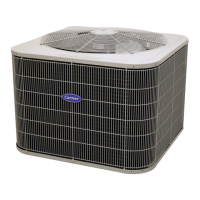
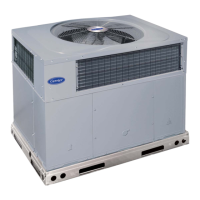
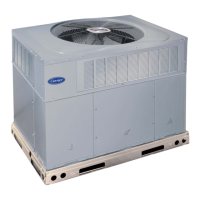
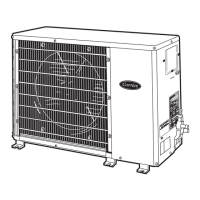
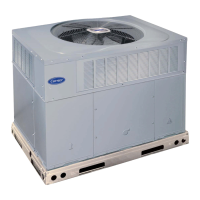
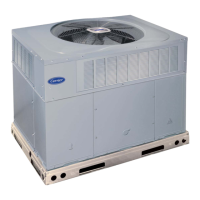
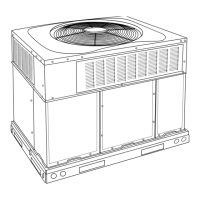
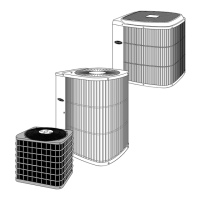


